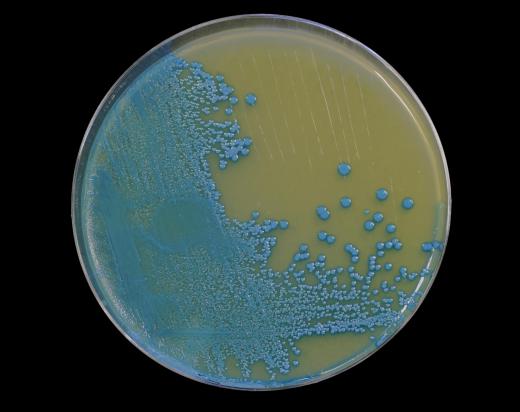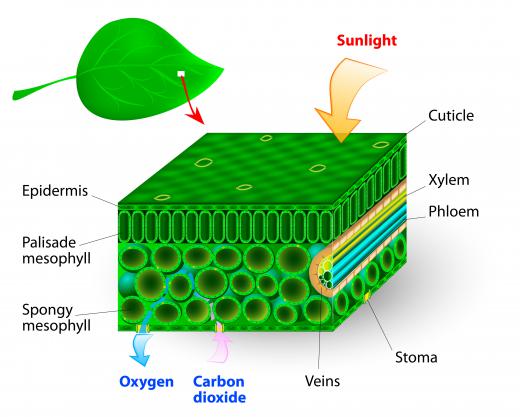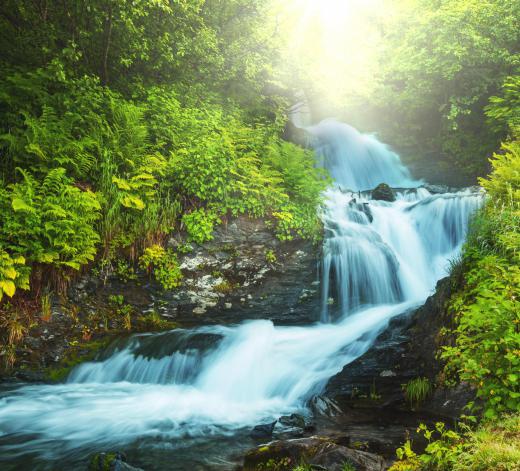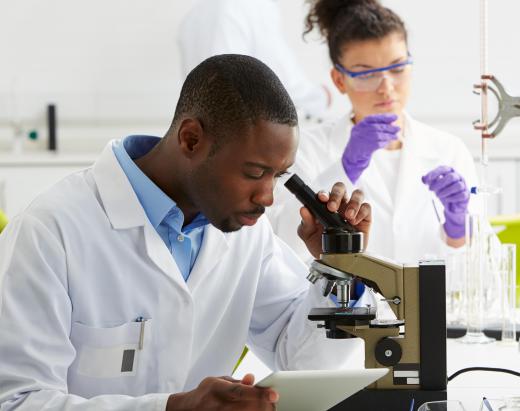What is Cyanobacteria?
 Michael Anissimov
Michael Anissimov
The term “cyanobacteria” refers to a large group of single-celled organisms that have pre-historic roots but are still very abundant in modern times, usually in water or otherwise wet environments. They are sometimes called “blue-green algae” because large colonies of them in the water often look like algae, which are aquatic plants. There isn’t a biological connection between the bacteria and algae, however. The bacteria create energy through photosynthesis, and they exist near the surface of most any water. Oceans, rivers, streams, and puddles house them; even some glaciers and mud have been found to contain small colonies. Many scientists believe that this sort of bacteria played an instrumental role in the evolution of cellular life on Earth.
Basic Characteristics

Individual cyanobacterium are microscopic, which means that they can’t be seen without the helo of a microscope or other magnification tool. They are widely present in most of the water sources on the planet, though, and they frequently form colonies that can be seen. These colonies, which are typically made up of millions of cells linked together, sometimes resemble algae. The bacteria will link together for a couple of different reasons, but when it happens it’s usually most visible near the surface of the water and tends to be bright blue in color. Cells are this color individually, too, but it’s most apparent when seen in a massive group.
Single cells can vary in shape; most are slender and tubular, but some have a more flattened oval shape. They have an average length of about 2 millimeters and are generally very simple from a scientific standpoint.
Different Types

Based on their shape, known more formally as their “morphology,” cyanobacteria have been classified into five groups: chroococcales, pleurocapsales, oscillatoriales, nostocales and stigonematales. However, the common lineage of only the last two groups has been established. Just because two organisms have a similar shape, they are not necessarily phylogenetically related, which means that they may not be members of the same classificatory group known as a phylum.
Energy Production

This type of bacteria creates its own energy and food through photosynthesis, the same as most plants. What this means is that the cells are able to convert sunlight into energy that can be stored as carbohydrates such as sugar. As a result, the cells are almost completely self-sufficient: they are able to create and store all of the energy they need to thrive and reproduce.

Photosynthesis in cyanobacteria uses water as an electron donor and produces oxygen as a byproduct. The photosynthesis occurs in membranes called thylkoids, with chlorophyll being employed to absorb the sun's rays. Unlike most other organisms that carry out photosynthesis in specialized organelles, these bacteria make the conversion directly in the cytoplasm of their cells.
Evolutionary History
Many evolutionary biologists say that the chloroplasts found in most living plants are probably descended from or were once created by cyanobacteria. Considering that they possess their own DNA, experts say that it’s possible that more sophisticated plant cells brought these bacteria into their structure long ago as a sort of mutually beneficial “symbiotic” relationship.
These organisms are very old, with some fossils dating back almost 4 billion years to the Precambrian era. This makes them among the oldest things in the fossil record. Biologists generally believe that these organisms played a key role in increasing the amount of oxygen in the Earth's atmosphere. Research has shown that, for almost 2 billion years, these bacteria and other prokaryotes were the only organisms on Earth, since eukaryotes had not evolved yet. Conceivably, life on other plants, if it exists, may consist of prokaryotes like cyanobacteria and not eukaryotes. Due to their simplicity, prokaryotic cells are about 1,000 times smaller than eukaryotic cells.
Health Considerations
From time to time, the bacteria will form large chains in the water and then begin to decompose or die off. This causes the cells to feather out, and the result is sometimes called a blue algae “bloom” thanks to its color and appearance. The blooms can be toxic to humans and animals, and people are usually discouraged from swimming in lakes and pools where the bacteria has been spotted in high concentrations like this. Individual cells aren’t usually harmful and are often ingested or swallowed without any bad consequences, even if they are weak, dying, or dead. Large strains, however, often contain high enough concentrations of nitrogen and other chemicals that they can damage the lungs and respiratory tracts of people who consume them. Bacteria specialized for nitrogen fixation are called heterocysts, and these tend to be the most dangerous.
AS FEATURED ON:
AS FEATURED ON:














Discussion Comments
i want to know more about gas exchange in cyanobacteria, bacteria and also volvox. It's just really hard to find.
i want to know the structure of cynobacteria with names.
thanks so much! this was an awesome bit of info. Helped me greatly in prep for my upcoming exams.
It's great data. Thanks a lot for helping. My report is on cyanobacterial biofertilizer.
Good website. I thought cyanobacteria underwent the process of chemosynthesis, not photosynthesis.
Thanks, it was of great help for my science assignment on "evolution or origin of life".
Post your comments